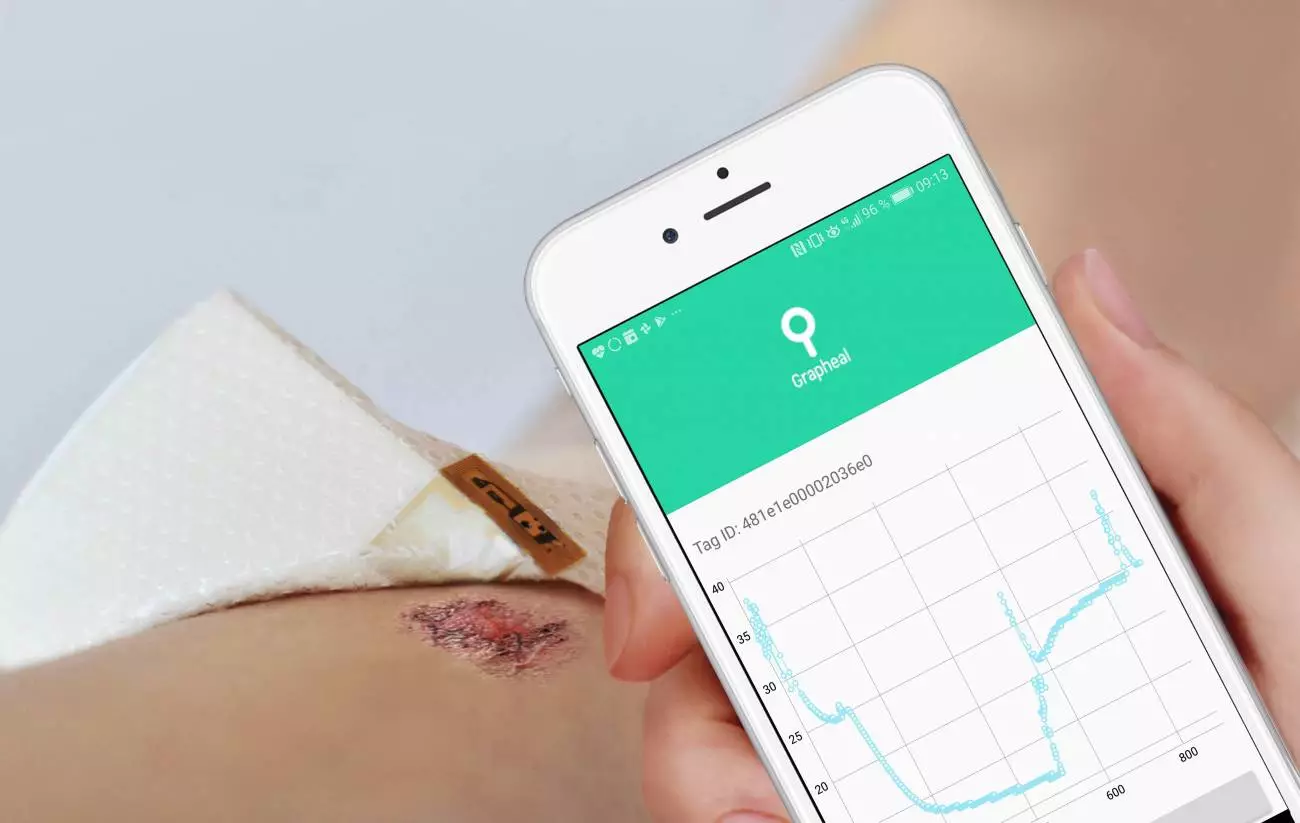If someone is suffering from a chronic wound such as a diabetic skin ulcer, it's important for their doctor to continuously know the status of that injury. A new bandage is designed to keep physicians in the loop, via everyone's favorite wonder material – graphene.
The device is being developed by scientists at biotech startup Grapheal, a spin-off company from France's National Centre for Scientific Research.
It consists of a polymer film base, along with embedded flexible electronics including graphene electrodes that are in direct contact with the wound. Graphene, for those who don't know, is an electrically-conductive material consisting of a one-atom-thick sheet of linked carbon atoms.
As the chemistry of the wound changes – such as its pH rising with increased infection – the conductivity of the graphene electrodes changes accordingly. This data is wirelessly transmitted from the bandage to a nearby smartphone or tablet, which proceeds to relay it from the patient's home to a cloud-based server for analysis.

Doctors or nurses can then view online updates on the condition of the wound, without having to see the patient in person – and without having to remove the bandage. As an added bonus, due to graphene's already-known antibacterial qualities, the bandage should reportedly also help facilitate the wound-healing process.
Human trials of the technology are set to begin soon, with a commercial rollout estimated to take place within about three years.




